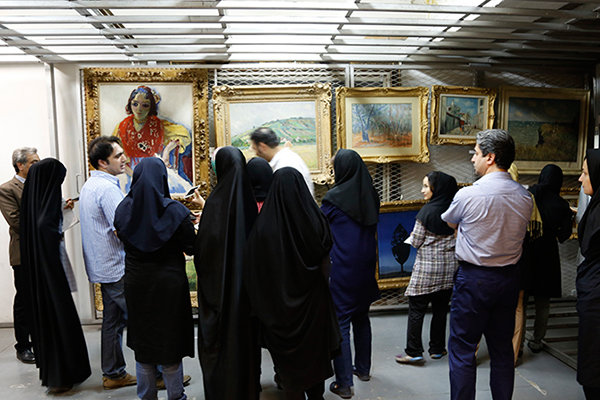Tour of TMoCA Collection Canceled
By HG Masters

Students looking at artworks in the TMoCA collection. Photo via TMoCA.
The TMoCA collection is the object of much fascination and speculation. The works were originally assembled by advisors for the Iranian empress Farah Diba Pahlavi in the 1970s, and they debuted in 1977 when the newly constructed museum opened in Tehran. Following the 1979 Iranian Revolution, which forced the Shah Reza Pahlavi and his family into exile, works from the collection were rarely displayed in the museum until an exhibition of Pop Art in 1999, and then more substantially in 2005 when the museum’s outgoing director Alireza Sami-Azar put highlights on view for five months. Among TMoCA’s holdings are many famous works by European painters including Claude Monet, Henri Matisse, Pablo Picasso, Francis Bacon, and midcentury American figures such as Jackson Pollock, Jasper Johns and Andy Warhol. The TMoCA collection exhibition would have also provided an important international showcase for Iranian artists, as it featured an equal number of important 20th-century Iranian artists, including painter Farideh Lashaï and sculptors Bahman Mohassess, Monir Farmanfarmaian and Parviz Tanavoli.
In late December, Berlin officials maintained they are eager to host the exhibition at a future date. Those prospects, however, might have grown even more unlikely in the coming years. The exhibition was negotiated in 2015 during the détente between Iran and world powers following the signing of the P5+1 nuclear accords and the lifting of some international sanctions. Now the political winds have shifted with the election of Donald Trump as US president, as Trump promises to adopt a confrontational approach with Iran, including tearing up the deal. But given the financial value of the collection and its diplomatic potency, its future status and any tours of Europe or the United States are likely to be re-negotiated again at some later date.
H.G. Masters is editor-at-large of ArtAsiaPacific.
To read more of ArtAsiaPacific’s articles, visit our Digital Library.







